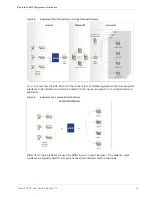
Selenio
TM
BNP User Guide, Release 3.7.1
18
Overview
- BNP Deployment Architecture
This scalability reduces capital costs and allows operators to allocate budgets accordingly. By paying for
processing on an as needed basis, operators can wisely plan budgets based on today’s requirements
and avoid over-allocation to meet future needs. The programmable and upgradeable architecture of
the BNP, as well as its high processing power, eliminates hardware changes and will simplify and
expedite future deployments of new video processing applications.
The BNP supports both ASI and Gigabit Ethernet interfaces, allowing operators who deploy Gigabit
Ethernet networks to profit from the increased cost-efficiency offered with this transport, while still
providing support for operators with legacy ASI networks. This flexibility enables operators with ASI
networks to continue with their existing infrastructures while providing an upgrade path for a future
transition to an IP-based network.
The BNP has eight Gigabit Ethernet interfaces and is scalable to support up to 18 ASI interfaces using
up to three ASI modules. The Gigabit Ethernet interfaces are part of the BNP’s base configuration and
no additional hardware or licensing is required to utilize these ports. Providing added flexibility, each
ASI interface is software configurable as input or output by using an easy-to-use graphical user
interface.
Figure 7.
Example of BNP Grooming of GigE or ASI Input Over GigE Transport Network
B N P
A BNP deployed for bulk rate capping in a Switched Digital Video (SDV)
architecture is shown in
.
















































